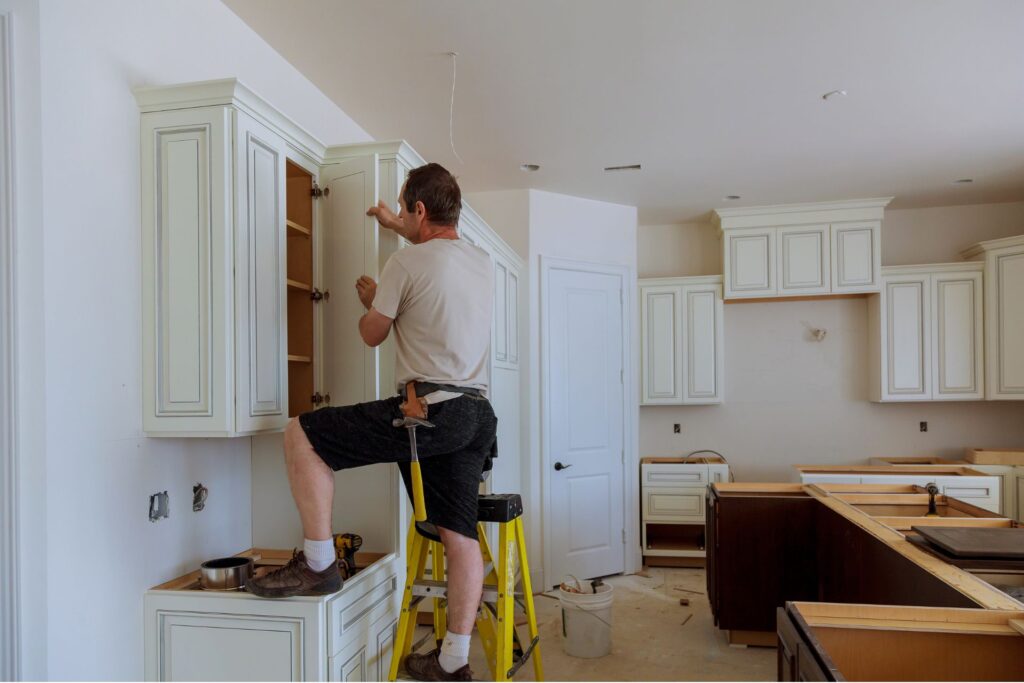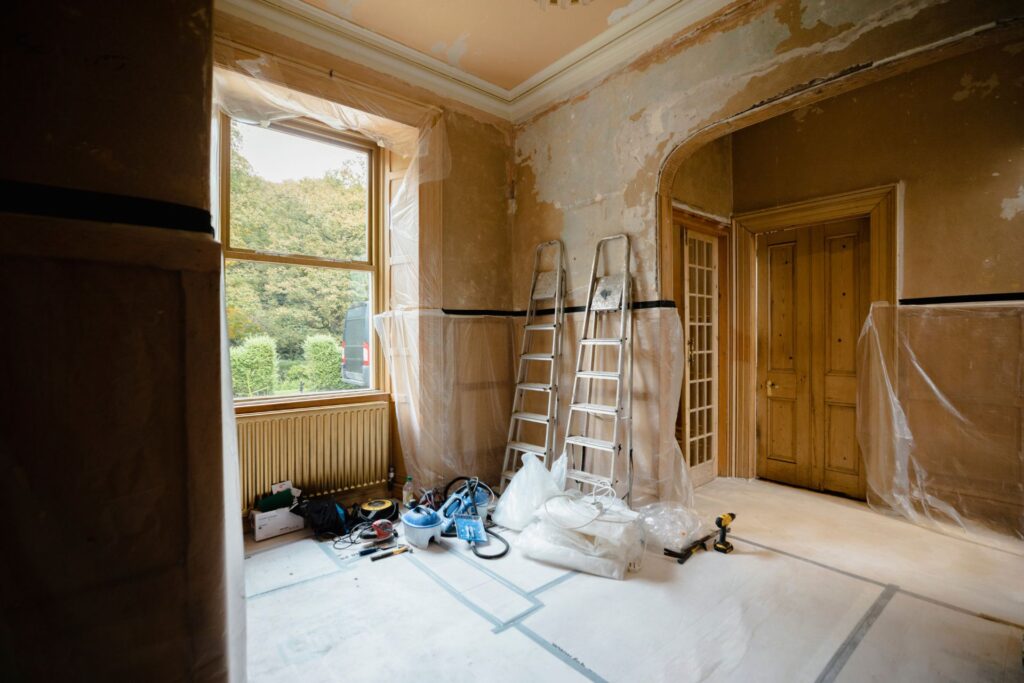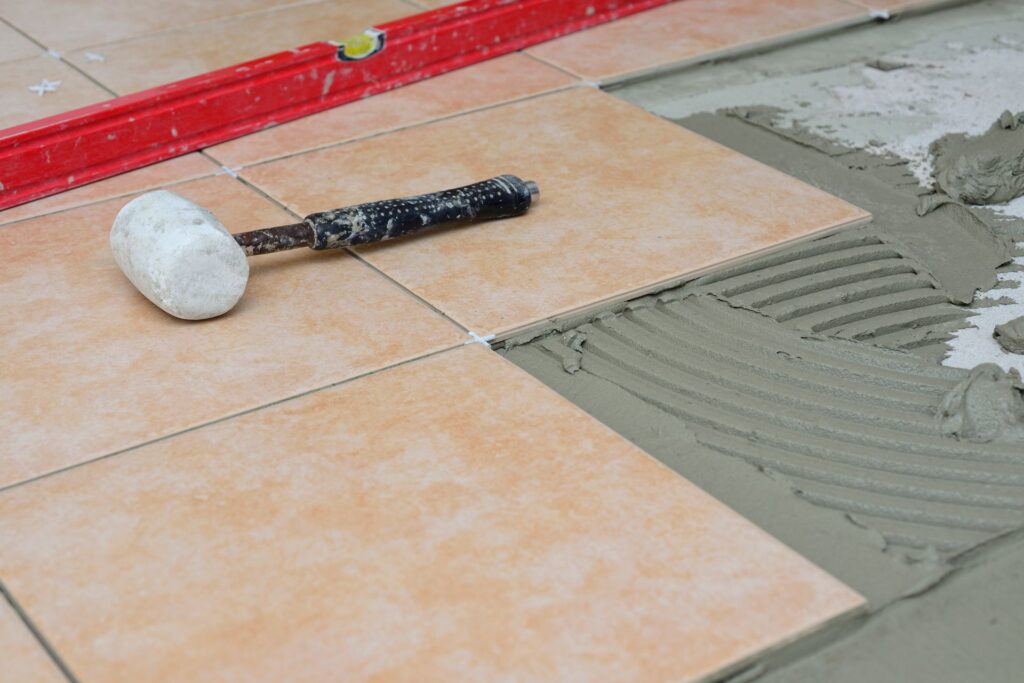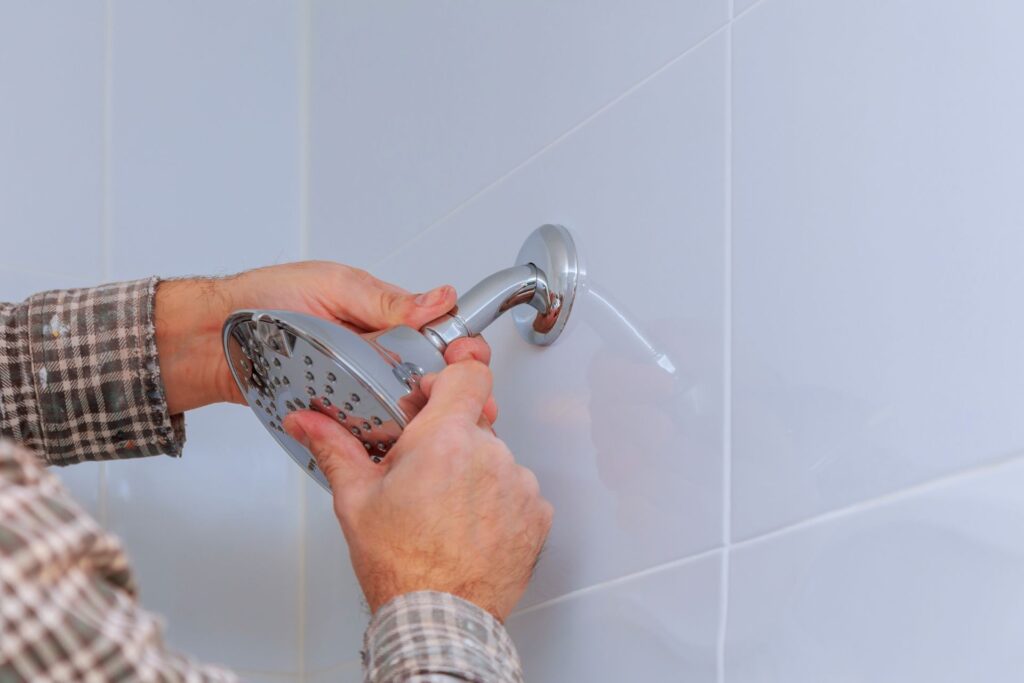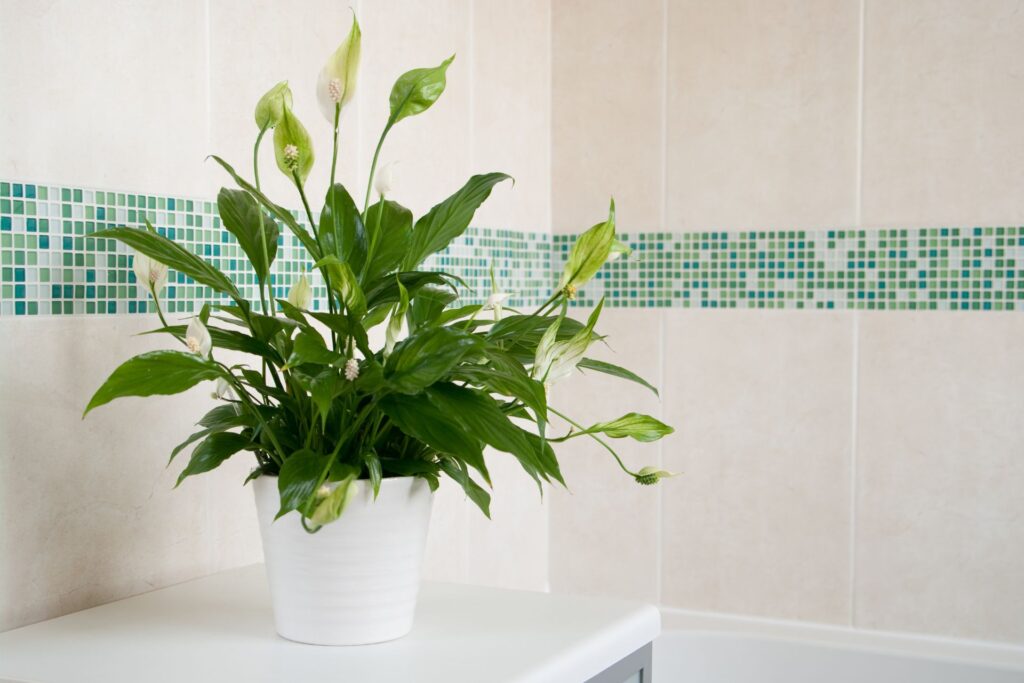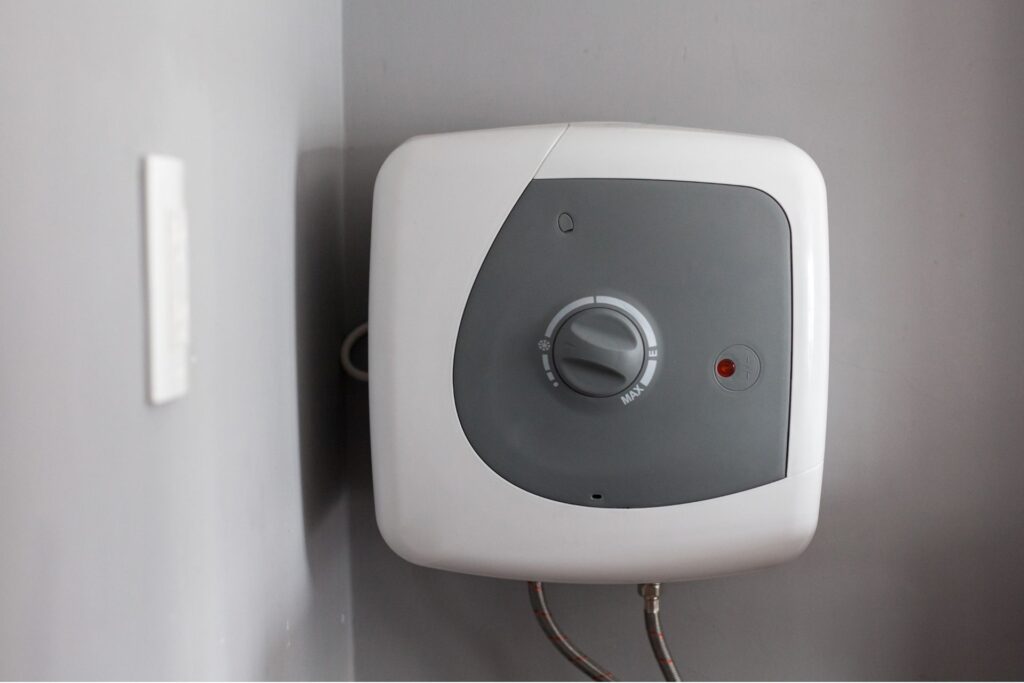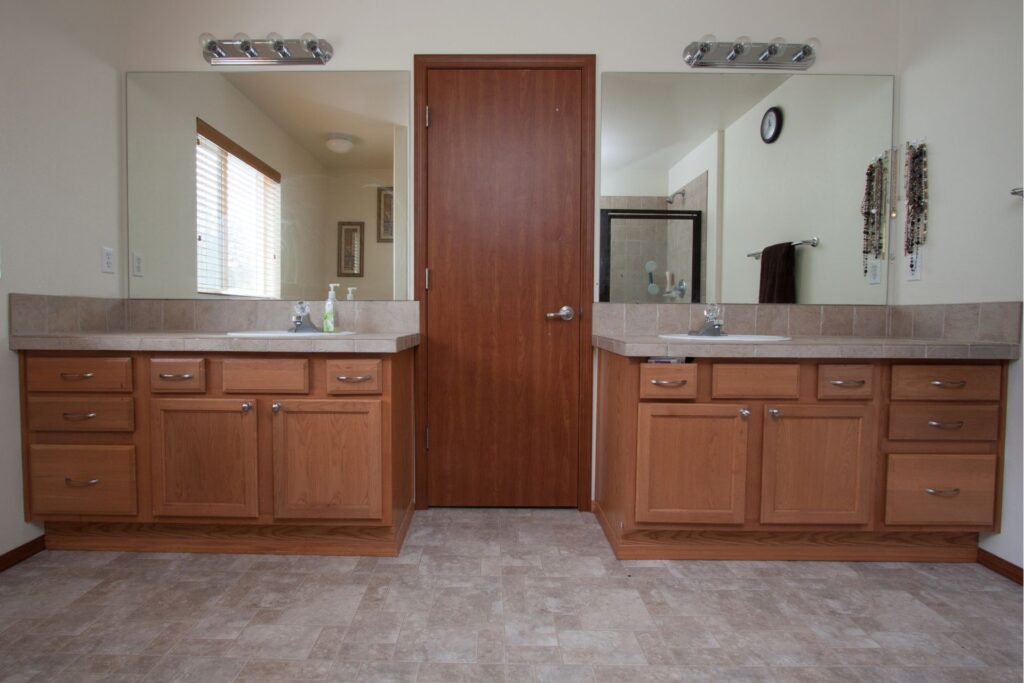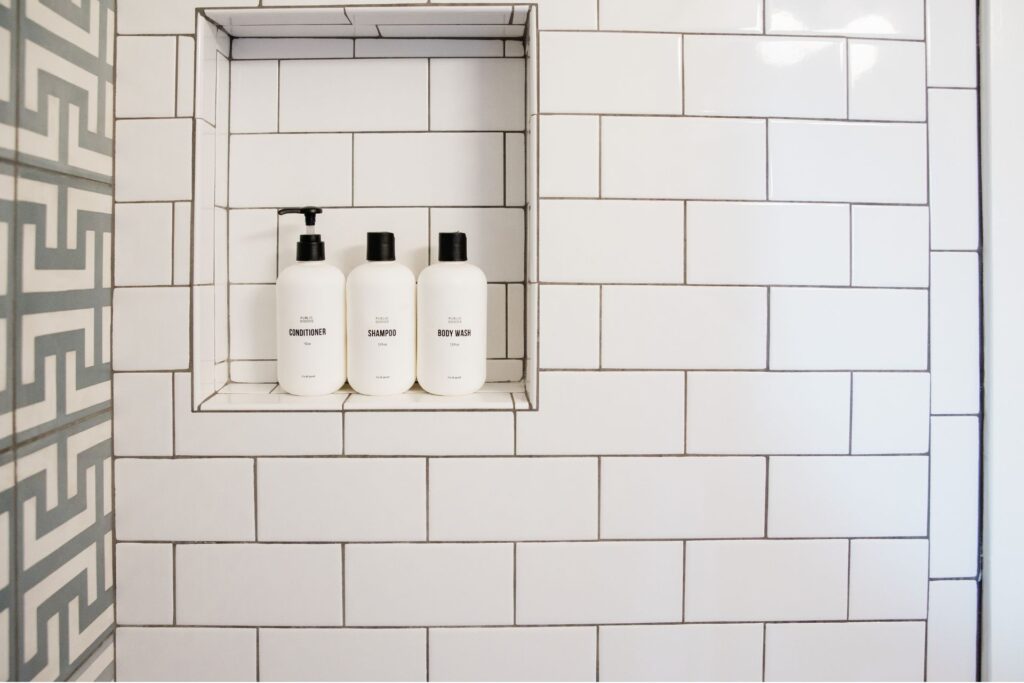Welcome to your ultimate guide on the bathroom renovation process in New Zealand! Whether you’re dreaming of a sleek, modern space or a cozy, functional retreat, renovating a bathroom can be both an exciting and daunting task. In this comprehensive guide, we’ll walk you through every step of the journey, from the initial planning stages to the final finishing touches, ensuring you’re well-prepared to create the bathroom of your dreams. With practical tips, expert advice, and a focus on the unique aspects of renovating in NZ, this guide is designed to help you navigate the process with confidence and ease.
The bathroom renovation process in NZ involves several key steps: planning and budgeting, choosing a design, hiring professionals, and obtaining necessary permits. The renovation typically includes demolition, upgrading plumbing and electrical systems, installing new fixtures, and final decorating. Proper planning and adherence to local regulations are essential for a successful project.
Why Renovate Your Bathroom
Renovating your bathroom might seem like a daunting task, but the rewards can be substantial. A well-planned bathroom renovation can transform one of the most used spaces in your home into a personal sanctuary, adding value to your property and improving your quality of life.
The Benefits of a Bathroom Overhaul
Increase in Property Value
One of the most compelling reasons to renovate your bathroom is the potential increase in property value. Real estate experts often highlight bathrooms and kitchens as key selling points for homes. A modern, well-designed bathroom can significantly boost the resale value of your home, making it a smart investment. In New Zealand, where property values are always a hot topic, a bathroom renovation could give your home the edge it needs in a competitive market. Even if you’re not planning to sell anytime soon, knowing that your investment could pay off in the future is a reassuring thought.
Enhanced Comfort and Aesthetics
Beyond the financial benefits, a bathroom renovation can vastly improve your daily life. Imagine stepping into a beautifully designed space that feels luxurious and relaxing—a place where you can unwind after a long day. Upgrading to a larger bathtub, a rainfall showerhead, or installing heated flooring can elevate your bathroom experience. The aesthetic improvements, such as new tiles, modern fixtures, or a fresh color scheme, can make the space more pleasing to the eye, creating a calming atmosphere that enhances your overall well-being.
Improved Functionality and Space Optimization
As our lifestyles change, so do our needs. An outdated bathroom might no longer suit your current lifestyle. Perhaps you need more storage, or maybe the layout isn’t as functional as it could be. A bathroom renovation allows you to reimagine the space, optimizing it for your specific needs. By reconfiguring the layout, adding cabinets, or incorporating smart storage solutions, you can create a bathroom that is not only more functional but also feels more spacious. This is particularly important in smaller bathrooms, where every square meter counts. A well-planned renovation can help you maximize the space you have, making your bathroom more practical and enjoyable to use.
Sustainability and Energy Efficiency with Modern Fixtures
In today’s world, sustainability is more important than ever. Renovating your bathroom is a great opportunity to make environmentally friendly choices that can reduce your carbon footprint and save you money in the long run. By installing water-saving fixtures, energy-efficient lighting, and eco-friendly materials, you can create a bathroom that’s as kind to the planet as it is to your wallet. Modern fixtures and appliances are designed to use less water and energy without compromising on performance, making your bathroom more sustainable. Plus, these upgrades can lead to lower utility bills, adding another layer of financial benefit to your renovation.
A bathroom renovation offers a multitude of benefits, from increasing the value of your property to enhancing your daily comfort. Whether you’re motivated by the potential for a higher resale price, the desire for a more beautiful and functional space, or the goal of creating a more sustainable home, renovating your bathroom is a worthwhile investment that can improve your life in more ways than one.

Understanding The Bathroom Renovation Process In NZ
Embarking on a bathroom renovation in New Zealand is an exciting yet complex endeavor. Whether you’re upgrading for style, functionality, or to increase your home’s value, understanding the process is crucial for a successful outcome. This section breaks down the essential steps, providing you with the knowledge to navigate your renovation journey smoothly.
Breaking Down the Steps
Initial Planning and Budgeting
The foundation of any successful bathroom renovation is thorough planning and a clear budget. Start by setting realistic expectations about what you can achieve within your budget. In New Zealand, bathroom renovations can vary significantly in cost depending on factors like the size of the space, the materials used, and the level of customization required. On average, a basic renovation might cost around NZD 10,000 to NZD 15,000, while a high-end makeover can exceed NZD 30,000.
Your budget will dictate the scope of your project, from the fixtures and fittings you choose to the professionals you hire. It’s essential to allocate funds wisely, considering both current needs and long-term value. Don’t forget to set aside a contingency budget—typically around 10-15% of the total cost—to cover unexpected expenses that often arise during renovations.
Design and Inspiration
Once you have a budget in place, the next step is to gather design inspiration. New Zealand’s unique blend of contemporary and traditional styles offers a wealth of ideas. Whether you’re drawn to the clean lines of modern Kiwi design or the timeless appeal of a more classic aesthetic, your bathroom should reflect your personal taste while complementing the overall style of your home.
Take the time to explore different design elements such as color schemes, materials, and layout options. Popular trends in New Zealand include natural materials like wood and stone, open-plan layouts that maximize space, and the use of large tiles to create a seamless look. While it’s easy to get carried away with the latest trends, remember that your bathroom’s design should be practical and functional, not just visually appealing.
Hiring Professionals vs. DIY
One of the biggest decisions you’ll face is whether to hire professionals or tackle the renovation yourself. While DIY can be a cost-effective option, it’s important to be realistic about your skills and the complexity of the job. Bathroom renovations often involve plumbing, electrical work, and waterproofing—tasks that require expertise to ensure safety and compliance with local building codes.
In New Zealand, hiring licensed professionals is not just recommended but often necessary, especially for plumbing and electrical work. When choosing tradespeople, look for those with experience in bathroom renovations, check their references, and ensure they’re familiar with the specific requirements of New Zealand’s building regulations.
DIY projects can save money and offer a sense of accomplishment, but they come with risks, particularly if things go wrong. Mistakes can be costly and time-consuming to fix. On the other hand, professionals bring experience and efficiency, potentially saving you time and stress.
Understanding New Zealand’s building consent and local regulations is also critical. Some renovations, especially those involving structural changes or plumbing, may require consent from your local council. Failing to obtain the necessary approvals can lead to legal issues and complications when selling your home.
Timeline and Scheduling
A well-planned timeline is essential for keeping your renovation on track. The duration of a bathroom renovation can vary depending on the project’s complexity, the availability of materials, and the efficiency of your contractors. On average, a bathroom renovation in New Zealand might take anywhere from 4 to 8 weeks, but it’s not uncommon for delays to occur.
Creating a realistic timeline involves more than just setting a start and end date. Consider the time needed for each phase of the renovation, from demolition and plumbing to tiling and final touches. Be mindful of factors that can cause delays, such as unforeseen structural issues, backorders on materials, or weather conditions.
Staying flexible and prepared for the unexpected can help reduce stress and keep the project moving forward. Regular communication with your contractors and suppliers is key to ensuring everyone is on the same page and working towards the same deadlines.
Understanding the bathroom renovation process in New Zealand involves careful planning, budgeting, and decision-making. By breaking down the steps and considering the unique aspects of Kiwi design and local regulations, you can achieve a renovation that not only meets your needs but also adds value to your home.
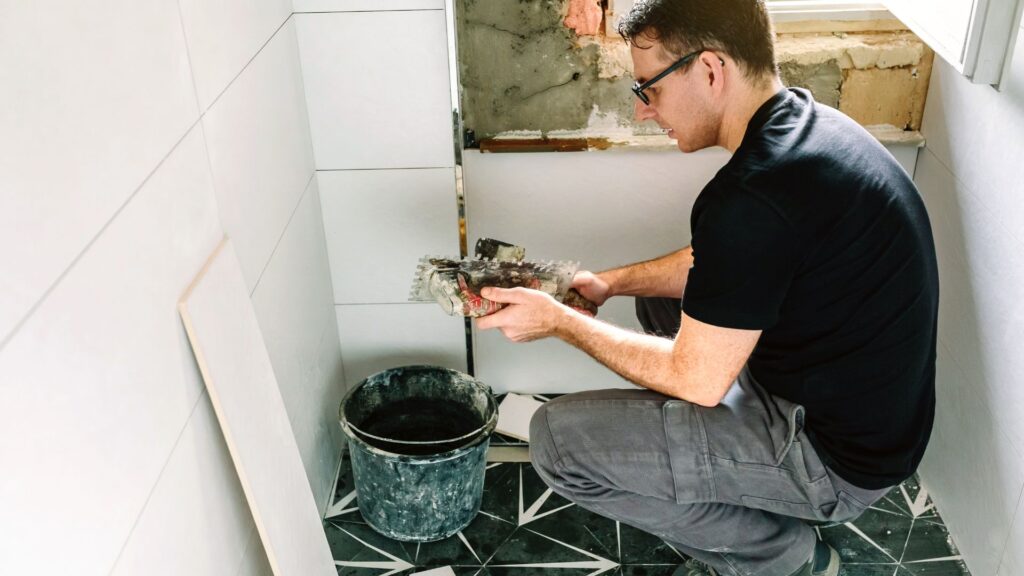
Key Steps In The Bathroom Renovation Process
Renovating your bathroom can be an exciting yet challenging endeavor. Whether you’re refreshing an outdated space or creating a luxurious retreat, understanding each step of the renovation process is crucial. Here’s a detailed breakdown of the key steps involved, from the initial demolition to the final touches, to ensure your bathroom renovation in New Zealand is smooth and successful.
From Demolition to the Final Touches
Demolition and Preparation
The first significant phase of any bathroom renovation is demolition. This is where the transformation begins, but it can also be one of the messiest stages. During this phase, you can expect to see your old bathroom stripped back to its bare bones. This includes removing outdated fixtures, tiles, and sometimes even the walls and flooring, depending on the extent of your renovation.
Dealing with old plumbing and wiring is a critical part of this step. In older New Zealand homes, it’s common to encounter outdated plumbing and electrical systems that no longer meet current standards. This is the time to upgrade these systems to ensure they’re safe and efficient. Not only does this make your bathroom safer, but it also helps prevent costly issues down the line.
Proper waste disposal is another essential aspect of the demolition phase. In New Zealand, strict regulations govern how construction waste should be handled. It’s important to work with a renovation team that understands these rules and ensures that all materials, especially hazardous ones, are disposed of in an environmentally responsible way.
Plumbing and Electrical Work
Once the old bathroom is stripped away, the next step involves the critical work of plumbing and electrical upgrades. This phase is vital to ensure that your bathroom functions efficiently and safely. Upgrading old systems is particularly important in older homes where pipes and wiring may be outdated. Replacing these systems can help prevent leaks, electrical faults, and other issues that could cause damage to your new bathroom.
Choosing energy-efficient solutions is a smart move during this stage. Opting for water-saving fixtures, such as low-flow toilets and showerheads, can reduce your water bills and lessen your impact on the environment. Similarly, energy-efficient lighting and heated towel rails not only add to the comfort of your bathroom but also contribute to long-term savings on your energy bills.
Flooring and Tiling
With the plumbing and electrical systems in place, it’s time to focus on the surfaces of your bathroom. Flooring and tiling are not only functional aspects of your bathroom but also play a huge role in defining its aesthetic.
In New Zealand, popular tile options include porcelain, ceramic, and natural stone. Each type has its advantages—porcelain and ceramic tiles are known for their durability and wide range of styles, while natural stone tiles, like marble or travertine, add a touch of luxury. However, it’s important to choose tiles that are specifically designed for bathroom use, as they need to be slip-resistant and waterproof.
Waterproofing considerations are crucial at this stage. Proper waterproofing ensures that your bathroom remains free from leaks and water damage, which can be particularly problematic in wet areas like showers and around bathtubs. In New Zealand, there are specific standards that must be met to ensure the waterproofing is up to code, making this step both a practical and regulatory necessity.
Installing Fixtures and Fittings
Once the tiles are in place, the next step is installing the fixtures and fittings that will bring your bathroom to life. This includes everything from the bathtub and shower to the toilet and vanity.
Choosing the right fixtures is crucial for both functionality and style. For example, when selecting a bathtub, consider the size of your bathroom and how you intend to use the space. Freestanding bathtubs are currently a popular trend in New Zealand, offering a luxurious feel, while built-in options are great for saving space. Similarly, modern showers with frameless glass doors can create a sleek, open feel in your bathroom.
Trends in bathroom fittings in New Zealand often lean towards minimalist designs with clean lines and high-quality materials. Chrome and matte black finishes are particularly popular, adding a contemporary touch to the space. However, it’s also important to choose fittings that are durable and easy to maintain, ensuring they look great for years to come.
Painting and Decorating
The next phase is where your bathroom truly starts to take shape—the painting and decorating. This step allows you to inject personality into your space and create a bathroom that reflects your style.
When choosing the best paint options for moisture-prone areas like bathrooms, it’s essential to opt for high-quality, mold-resistant paints. These paints are specifically designed to withstand the humidity and dampness typical of bathrooms, preventing issues like mold and mildew from developing.
Adding personality with color and décor can transform a standard bathroom into a space that feels uniquely yours. Whether you prefer a serene, spa-like atmosphere with soft, neutral tones or a bold, vibrant look with rich colors and contrasting accents, the right paint and decorations can make all the difference. Don’t forget to consider the small details, like mirrors, lighting, and accessories, which can elevate the overall design.
Final Inspection and Touch-Ups
The last stage of your bathroom renovation is the final inspection and touch-ups. This is where everything comes together, and it’s crucial to ensure that every detail is perfect before considering the project complete.
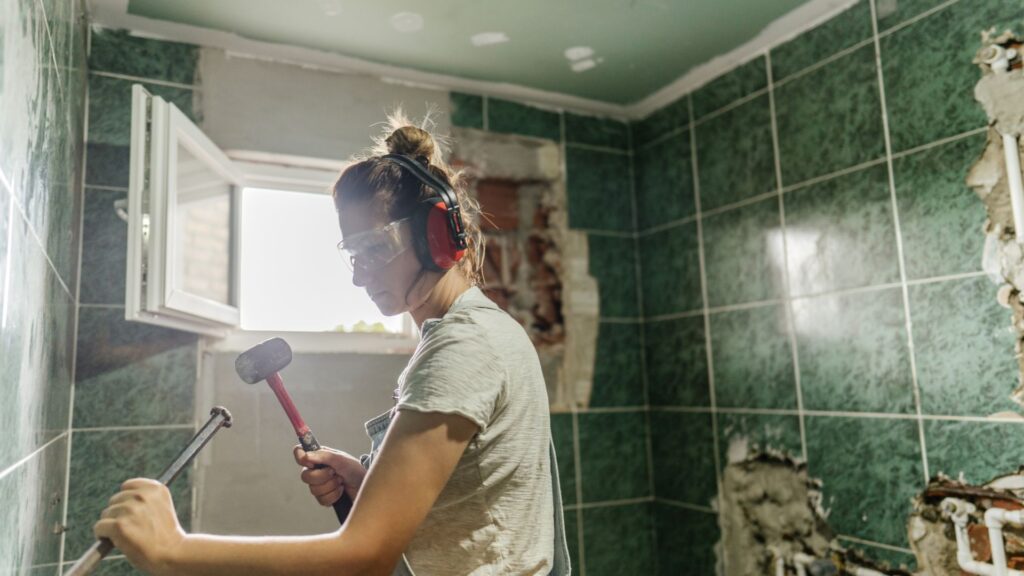
Common Challenges And How To Overcome Them
Navigating the Hurdles
Renovating a bathroom is an exciting yet daunting task, especially when you encounter unexpected challenges along the way. These obstacles can turn your dream project into a stressful experience if not managed properly. Here, we’ll walk you through some of the most common challenges you might face during your bathroom renovation and provide practical tips to help you overcome them. By being prepared and proactive, you can keep your project on track and ensure a successful outcome.
Unexpected Costs and Budget Overruns
One of the most common issues homeowners face during a bathroom renovation is unexpected costs. These can arise from a variety of sources, such as discovering underlying structural issues, changing the scope of work, or simply underestimating the costs of materials and labor. Going over budget can be frustrating and can potentially derail your entire project.
Tips for Managing and Minimizing Unexpected Expenses
1. Set a Contingency Budget: When planning your renovation, it’s wise to set aside an additional 10-15% of your total budget as a contingency fund. This cushion can help cover any unexpected expenses without causing financial strain.
2. Get Detailed Estimates: Before starting any work, obtain detailed quotes from contractors and suppliers. Make sure these quotes include all potential costs, such as permits, materials, and labor. The more comprehensive your estimates, the less likely you are to be caught off guard by unexpected costs.
3. Prioritize Your Wishlist: If your budget is tight, focus on the essential elements of your renovation first. Prioritize the must-haves and be willing to compromise on less critical items. This approach ensures that the most important aspects of your project are completed even if you run into unexpected costs.
4. Regularly Review Costs: Keep a close eye on your spending throughout the renovation process. Regularly reviewing your budget and expenditures allows you to identify any potential overruns early and take corrective action before they become significant problems.
Dealing with Delays
Delays are another common challenge in bathroom renovations, often caused by supply chain issues, contractor availability, or unforeseen complications. These delays can push back your project timeline, causing inconvenience and frustration.
How to Handle Delays
1. Plan Ahead: One of the best ways to avoid delays is to plan meticulously from the start. Ensure that all materials are ordered well in advance and that your contractor’s schedule is locked in. By having everything lined up, you reduce the risk of waiting for supplies or tradespeople.
2. Build in Buffer Time: Just as you have a contingency budget, build a buffer into your timeline. If your renovation is expected to take six weeks, plan for eight. This extra time allows for unexpected delays without causing too much disruption to your overall schedule.
3. Maintain Communication: Stay in regular contact with your contractor and suppliers. Open communication helps you stay informed about any potential delays and gives you the opportunity to address issues promptly. It also helps in setting realistic expectations about the project timeline.
4. Be Flexible: Sometimes, delays are unavoidable. In such cases, flexibility is key. Consider alternative options or temporary solutions to keep your project moving forward, such as completing other aspects of the renovation while waiting for delayed materials.
Working Around Existing Plumbing and Electrical Systems
One of the most complex aspects of a bathroom renovation is dealing with existing plumbing and electrical systems. These systems are often outdated and may not align with your new design plans, leading to challenges in installation and functionality.
Solutions When Your Old Systems Don’t Fit the New Design
1. Consult with Professionals: Before making any major changes, consult with a licensed plumber and electrician. They can assess the current systems and provide advice on whether they can be adapted to your new design or if they need to be completely replaced.
2. Plan the Layout Carefully: If possible, try to keep the new design close to the existing plumbing and electrical layouts. Moving these systems can be expensive and time-consuming. By working within the current framework, you can save both time and money.
3. Upgrade When Necessary: Sometimes, it’s more cost-effective in the long run to upgrade old plumbing and electrical systems rather than trying to work around them. Modern systems are more efficient and safer, and upgrading can add value to your home.
4. Expect the Unexpected: When working with older systems, be prepared for surprises. Hidden leaks, faulty wiring, or outdated components can all be uncovered during a renovation. Having a plan in place to address these issues quickly can prevent them from causing significant delays or cost overruns.
Navigating the challenges of a bathroom renovation can be tricky, but with careful planning and a proactive approach, you can overcome these hurdles with minimal stress. Remember to set a realistic budget, plan for potential delays, and consult with professionals to ensure that your new bathroom is both beautiful and functional. By addressing these common challenges head-on, you’ll be well on your way to creating the bathroom of your dreams.
Ensuring everything is up to code is a key part of this process. In New Zealand, building regulations are in place to ensure that all renovations meet safety and quality standards. A final inspection will check that all plumbing, electrical work, and waterproofing have been completed to a high standard and comply with local regulations.
Making final adjustments for a flawless finish might involve small tweaks like adjusting the alignment of fixtures, touching up paintwork, or ensuring that all fittings are securely installed. These small details can make a big difference in the overall look and feel of your bathroom, ensuring that you’re left with a space that is not only beautiful but also functional and safe.
By following these key steps, your bathroom renovation in New Zealand can be a smooth and successful process, resulting in a space that you’ll enjoy for years to come.

Sustainable And Eco-Friendly Renovation Tips
When embarking on a bathroom renovation, there’s an increasing desire among New Zealand homeowners to make choices that not only improve their living spaces but also reduce their environmental impact. Embracing sustainability in your bathroom renovation is about more than just following a trend—it’s about making thoughtful choices that benefit both the planet and your household. Here’s how you can make your bathroom renovation more sustainable and eco-friendly.
Going Green in Your Bathroom Renovation
Sustainability begins with the materials and fixtures you choose. By focusing on eco-friendly options, you can create a bathroom that is not only stylish but also kind to the environment. Let’s explore some practical ways to make your bathroom renovation greener.
Choosing Eco-Friendly Materials
One of the first steps in creating an eco-friendly bathroom is selecting sustainable materials. This starts with your choice of flooring and tiling. Many traditional options can be harmful to the environment, but there are excellent sustainable alternatives available in New Zealand.
- Sustainable Flooring and Tiling Options: Consider using bamboo or cork for your flooring—both are renewable resources that regenerate quickly, making them an excellent choice for eco-conscious homeowners. For tiling, look into recycled glass tiles, which are not only beautiful but also reduce waste by repurposing materials that would otherwise end up in a landfill. Porcelain tiles made from recycled content are another fantastic option, offering durability and a wide range of design possibilities without compromising on sustainability.
Water-Saving Fixtures
Water conservation is a crucial aspect of a sustainable bathroom renovation. With New Zealand’s commitment to protecting natural resources, it’s essential to consider fixtures that help reduce water usage.
- High-Efficiency Toilets, Showers, and Taps Available in NZ: Installing high-efficiency toilets, low-flow showerheads, and water-saving taps can significantly reduce your household’s water consumption. Look for products with the Water Efficiency Labelling and Standards (WELS) rating, which can guide you to the most efficient options on the market. Dual-flush toilets are a popular choice, offering the flexibility to use less water for liquid waste while still providing the necessary power for solid waste. Similarly, low-flow showerheads can cut water usage without sacrificing water pressure, making them a smart choice for an eco-friendly bathroom.
Energy-Efficient Lighting
Lighting is another area where you can make sustainable choices. Energy-efficient lighting not only reduces your carbon footprint but also cuts down on your electricity bills.
- LED Lighting and Natural Light Solutions: LED lights are the gold standard when it comes to energy-efficient lighting. They use up to 80% less energy than traditional incandescent bulbs and last significantly longer. In addition to installing LED lights, consider ways to maximize natural light in your bathroom. Skylights, larger windows, or even light tubes can bring in more daylight, reducing the need for artificial lighting during the day and creating a brighter, more inviting space.
Waste Management
A sustainable renovation doesn’t stop at the materials you bring in; it also involves how you handle the old materials you’re removing.
- How to Responsibly Dispose of Old Fixtures and Materials: Before you start demolishing your old bathroom, think about what can be recycled or repurposed. Many old fixtures, like sinks, toilets, and bathtubs, can be donated to organizations like Habitat for Humanity, which resell these items to fund their projects. Additionally, recycling centers in New Zealand accept a variety of construction materials, including metals, ceramics, and glass. Make a plan for what will happen to each item before it comes out of your bathroom to ensure that as little as possible ends up in the landfill.
Making sustainable choices in your bathroom renovation is not only about protecting the environment but also about creating a space that is healthier and more cost-effective in the long run. By choosing eco-friendly materials, installing water-saving fixtures, opting for energy-efficient lighting, and managing waste responsibly, you can make a positive impact that extends beyond your home.
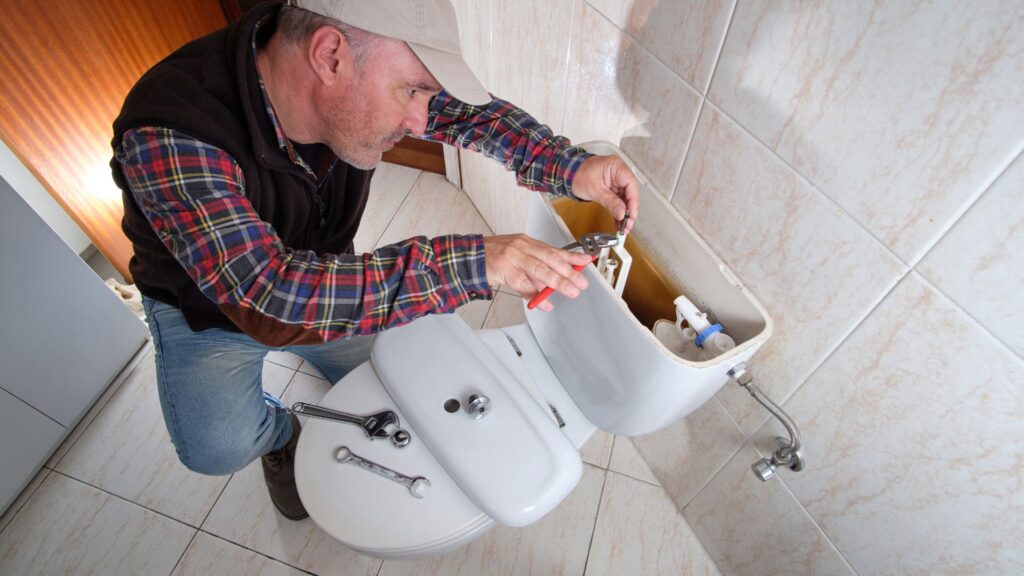
Aftercare And Maintenance Tips
Keeping Your New Bathroom in Top Shape
Your bathroom renovation is finally complete, and it looks stunning! But to keep it looking as good as the day the work was finished, regular aftercare and maintenance are essential. This section will guide you through practical tips to ensure your bathroom remains in top shape for years to come.
Routine Maintenance
Routine maintenance is the key to keeping your bathroom in pristine condition. While it might seem like a chore, staying on top of it can save you from more significant problems down the line. Here are some simple, yet effective tips:
- Daily Wipe-Downs: After each use, especially after showers or baths, take a minute to wipe down surfaces like countertops, mirrors, and tiles. This prevents soap scum, water spots, and grime from building up, keeping everything sparkling clean.
- Weekly Deep Cleaning: Once a week, dedicate some time to deep cleaning. Use appropriate cleaners for different surfaces; for instance, avoid abrasive cleaners on delicate materials like marble or granite. Focus on scrubbing the grout lines, polishing fixtures, and cleaning the toilet thoroughly. This routine will keep your bathroom hygienic and looking its best.
- Ventilation: Proper ventilation is crucial in a bathroom. Ensure that your exhaust fan is functioning correctly and use it during and after showers to reduce moisture levels. This simple step can prevent many issues associated with dampness.
Preventing Mold and Mildew
Mold and mildew can quickly become a problem in any bathroom, especially in a humid environment. These not only ruin the aesthetic of your new bathroom but can also lead to health issues. Here’s how to keep them at bay:
- Control Moisture: Moisture is mold’s best friend. To prevent it, always run the exhaust fan during and after using the shower. If possible, leave the bathroom door or window open for a while to let out excess humidity.
- Dry Surfaces: After showering, take a moment to dry off the walls, floor, and any other wet surfaces. This simple habit can prevent water from seeping into grout lines or behind tiles, where mold likes to grow.
- Use Mold-Resistant Products: When selecting paint or grout for your bathroom, opt for mold-resistant varieties. These products are designed to inhibit the growth of mold and mildew, providing an extra layer of protection.
Long-Term Care for Fixtures and Surfaces
Your bathroom renovation is an investment, and like any investment, it needs protection to last. By taking care of your fixtures and surfaces, you’ll ensure that they stay in excellent condition for years to come. Here’s what you can do:
- Cleaning Fixtures: Fixtures like faucets, showerheads, and towel bars should be cleaned regularly with non-abrasive cleaners. This prevents buildup of limescale and soap scum, which can dull the finish and cause wear over time. Polishing them occasionally will keep them shiny and new.
- Maintaining Surfaces: Different surfaces require different care. For example, natural stone surfaces should be sealed every six months to a year to protect against stains and moisture. Wooden surfaces, if any, should be treated with care to avoid water damage. Follow the manufacturer’s instructions for cleaning and maintaining all surfaces in your bathroom.
- Check for Wear and Tear: Periodically inspect your bathroom for any signs of wear and tear. Look for cracks in tiles, peeling caulk, or any leaks around fixtures. Addressing these issues early can prevent more significant problems and extend the life of your bathroom.
By following these aftercare and maintenance tips, you’ll not only keep your bathroom looking as beautiful as the day it was completed but also ensure that your renovation investment stands the test of time. Regular attention to cleaning and care will make your bathroom a space you’re proud to use and show off every day.

FAQs: About Bathroom Renovation Process NZ
Conclusion
In conclusion, navigating the bathroom renovation process in New Zealand is a journey that involves careful planning, selecting the right materials, and working with skilled professionals. We’ve covered essential steps, from budgeting and design to choosing fixtures and managing timelines, ensuring you’re well-prepared for each phase of your project. With this knowledge, you can approach your renovation with confidence, knowing that a well-executed plan is the foundation of a successful transformation. Now, it’s time to take that first step—whether you’re starting from scratch or giving your bathroom a much-needed refresh, understanding the renovation process will guide you toward achieving your dream space. Ready to transform your bathroom? Share your renovation journey with us and inspire others with your success!
About the Author:
Mike Veail is a recognized digital marketing expert with over 6 years of experience in helping tradespeople and small businesses thrive online. A former quantity surveyor, Mike combines deep industry knowledge with hands-on expertise in SEO and Google Ads. His marketing strategies are tailored to the specific needs of the trades sector, helping businesses increase visibility and generate more leads through proven, ethical methods.
Mike has successfully partnered with numerous companies, establishing a track record of delivering measurable results. His work has been featured across various platforms that showcase his expertise in lead generation and online marketing for the trades sector.
Learn more about Mike's experience and services at https://theleadguy.online or follow him on social media:


